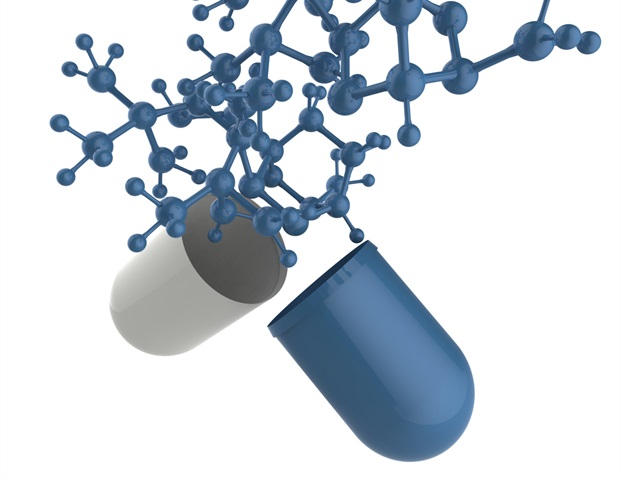
Superbugs, micro organism which are resistant to a number of antibiotics, pose an incredible problem to trendy drugs. Researchers from the B CUBE – Heart for Molecular Bioengineering at TUD Dresden College of Know-how and Institut Pasteur in Paris recognized a weak spot within the bacterial equipment that drives antibiotic resistance adaptation. Their findings, revealed within the journal Science Advances, might pave the best way to boosting the effectiveness of current antibiotics.
For the reason that discovery of penicillin in 1928, antibiotics have modified drugs, permitting us to simply fight bacterial infections. Nonetheless, with the invention of antibiotics, we’ve additionally entered a unending arms race with micro organism. They adapt quickly to medication, rendering many current remedies ineffective. Such antibiotic-resistant micro organism, typically dubbed “superbugs”, pose a vital risk to sufferers with continual diseases and weakened immune programs.
Relatively than growing new antibiotics, we needed to grasp precisely how micro organism adapt their resistances.”
Prof. Michael Schlierf, research chief, analysis group chief at B CUBE, TU Dresden
In doing so, the teams found why it takes longer for some micro organism to develop antibiotic resistance, whereas others adapt in a short time. Their findings open up new prospects for the event of counter-strategies.
A genetic toolbox in motion
“Our work focuses on the integron system, a genetic toolbox that micro organism use to adapt to their surroundings by exchanging genes, together with these for antibiotic resistance,” says Prof. Didier Mazel, analysis group chief at Institut Pasteur in Paris, whose group labored along with the Schlierf workforce.
The integron system is sort of a toolbox. It permits micro organism to retailer and share resistance genes with their offspring and neighboring cells. It operates by way of a molecular “lower and paste” mechanism pushed by particular proteins, often called recombinases. The integron system has been researched quite a bit. Some micro organism achieve new resistance very quick and for others, it takes significantly longer.
It turned out that the number of DNA sequences is on the coronary heart of this distinction. “The sequences contained in the integron system are flanked by particular DNA hairpins. They’re referred to as like this as a result of that is precisely how they seem like, like little U-shaped pins protruding of the DNA. The recombinases are constructed to bind to those hairpins and kind a posh that may then lower out one fragment and paste in one other one,” explains Prof. Mazel.
The Schlierf group used a cutting-edge microscopy setup to review how strongly a recombinase protein binds the completely different DNA hairpin sequences. They discovered that the complexes with the strongest binding between the protein and the DNA are additionally those which are essentially the most environment friendly at gaining resistance genes.
Utilizing the power
Utilizing a sophisticated microscopy method often called optical tweezers, the Schlierf group measured the tiny forces it takes to drag the completely different protein-DNA complexes aside. “With the optical tweezers, we use gentle to, kind of, seize a single strand of DNA from either side and pull it aside. Consider it as pulling on a twine to undo a knot,” says Dr. Ekaterina Vorobevskaia, a scientist within the Schlierf lab who carried out the mission.
The group noticed a transparent correlation between the power it took to dismantle a protein-DNA advanced and the effectivity of the cut-and-paste equipment. “When you’ve got a posh that’s strongly certain to the DNA, it may possibly carry out its job very effectively. Minimize the DNA and paste a brand new resistance gene very quick. Alternatively, when you have a protein-DNA advanced that’s slightly weak and retains falling aside, it must be reassembled many times. Because of this some micro organism achieve antibiotic resistance sooner than others,” provides Dr. Vorobevskaia.
Exploiting the weak spot
“The Integron system has been studied by microbiologists for many years. What we convey to the desk now could be including the biophysical knowledge and explaining the conduct of this method with physics,” says Prof. Schlierf, including that “Possibly this vulnerability to power is a extra normal phenomena for various efficiencies in biology”.
The scientists consider that the weak spot within the system can be utilized to develop supplemental remedies that may reap the benefits of, or create, the unstable DNA-protein complexes. It might accompany current antibiotics and provides them an extra time benefit over micro organism.
Supply:
Journal reference:
Vorobevskaia, E., et al. (2024). The recombination effectivity of the bacterial integron depends upon the mechanical stability of the synaptic advanced. Science Advances. doi.org/10.1126/sciadv.adp8756.

